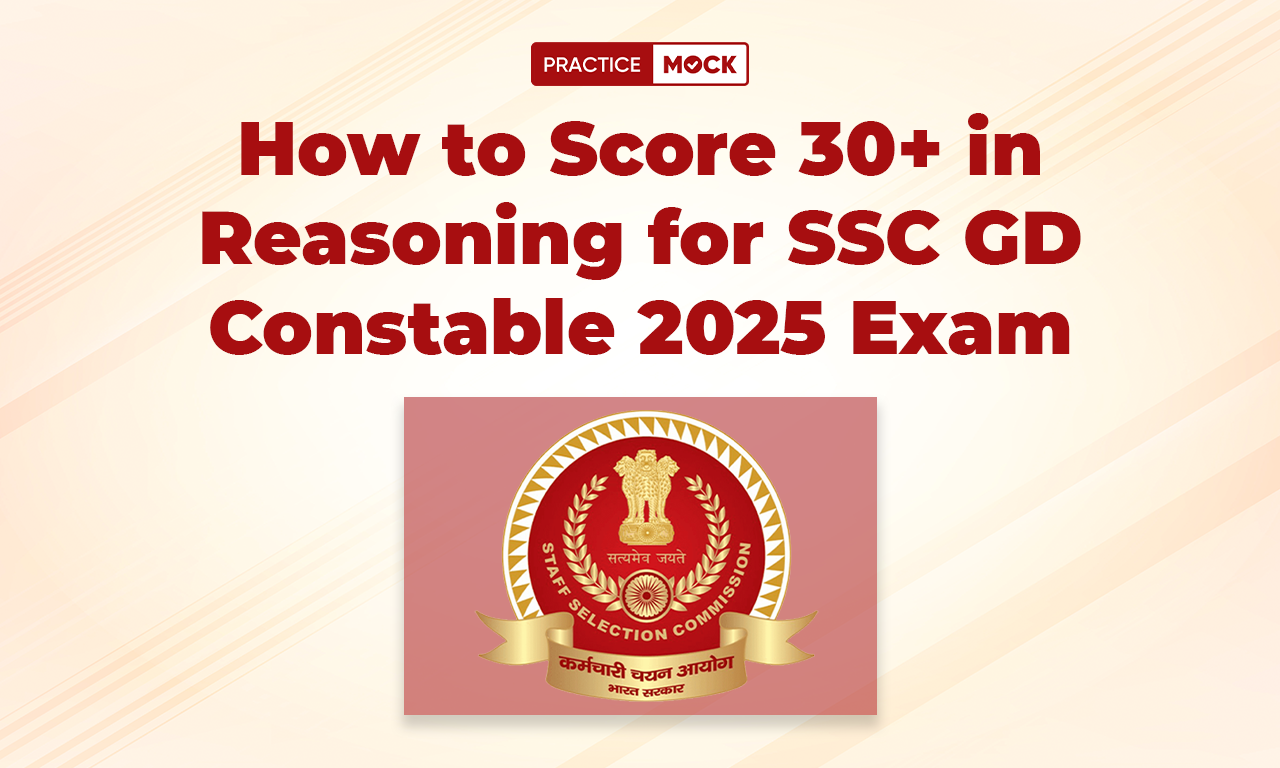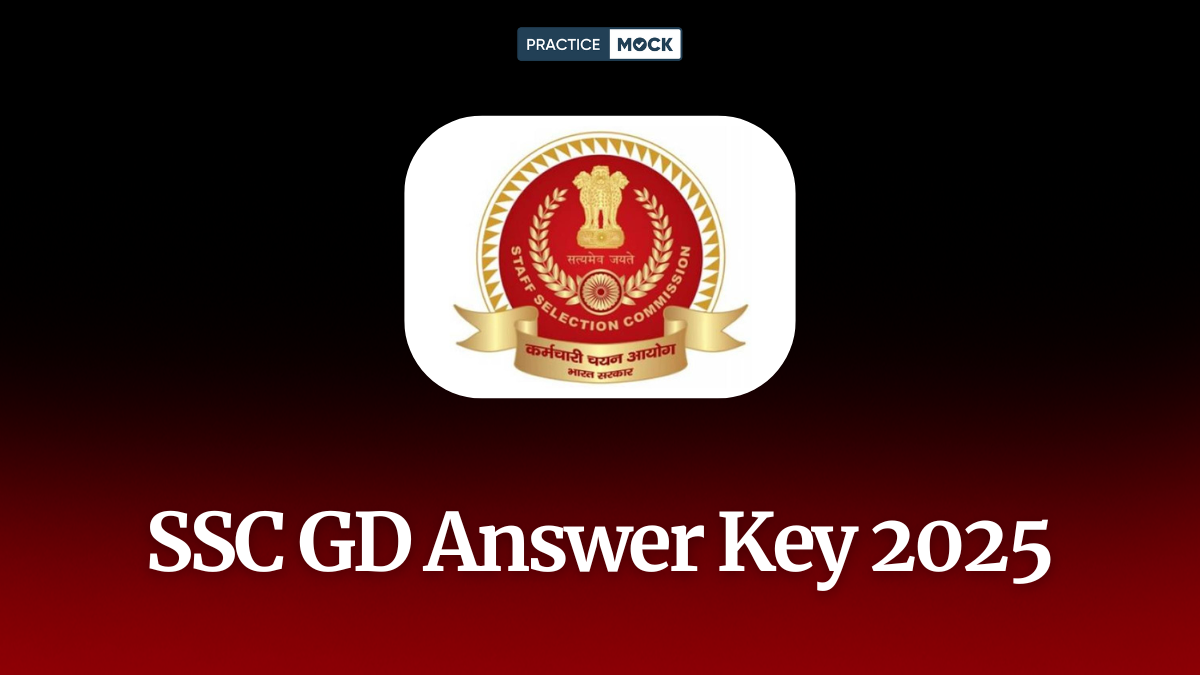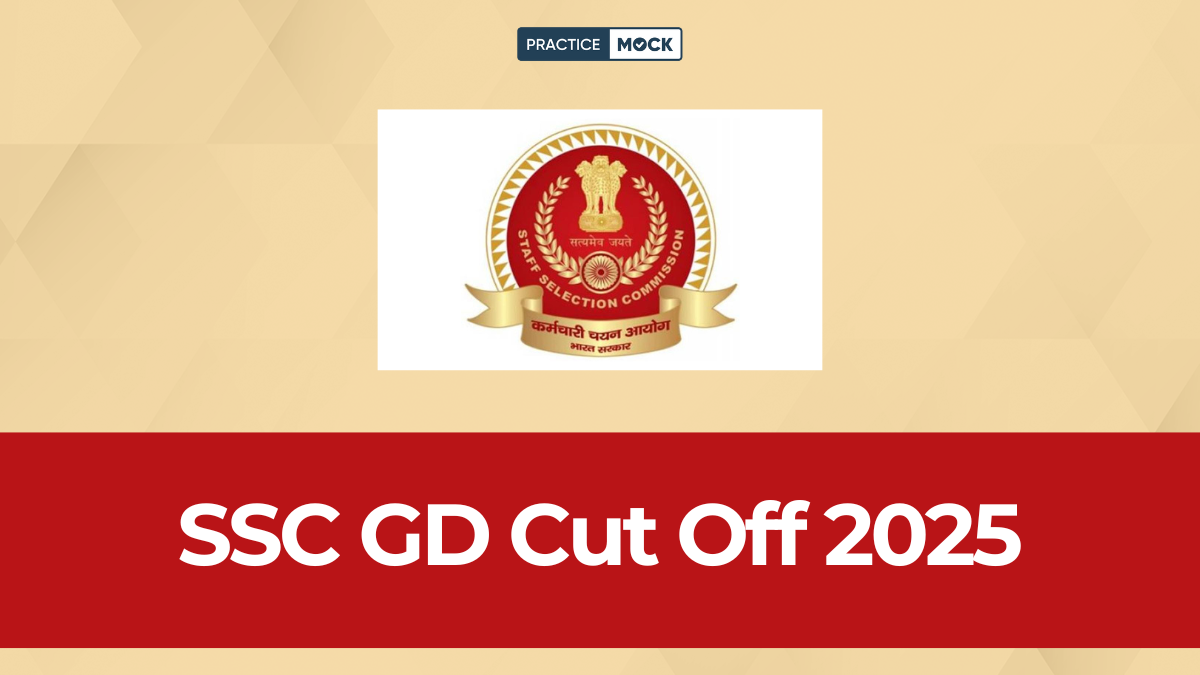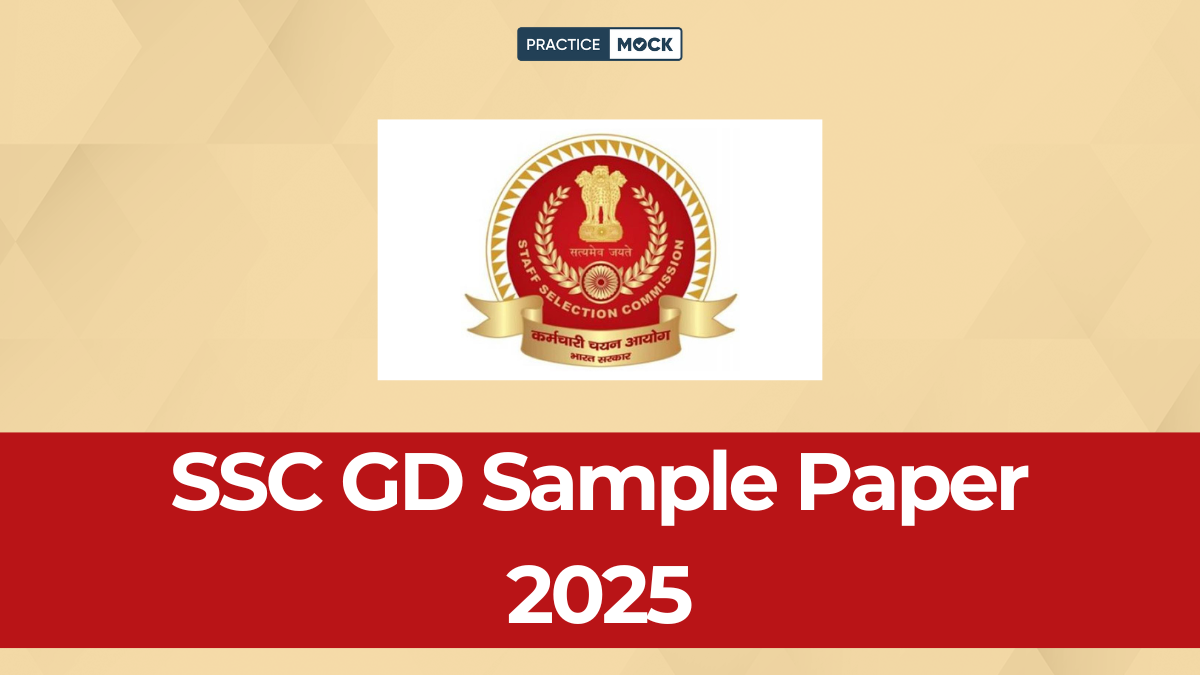How to Score 30+ in Reasoning for SSC GD Constable 2025 Exam


How to Score 30+ in Reasoning for SSC GD Constable Exam: The reasoning ability section is considered one of the highest-scoring sections. The SSC presents a total of 20 questions for 40 marks from the reasoning ability section in the SSC GD Constable exam. Most of the candidates don’t know the right way to complete the syllabus in the best way. To help such types of candidates we have provided a detailed 14-day study plan and best expert tips that will help them in scoring 30+ marks in the reasoning ability section for the SSC GD Constable 2025 exam. Candidates are advised to just follow the study plan systematically and read all the tips carefully that we have provided with the help of experts in this blog.
SSC GD Constable Reasoning Exam Weightage
Below we have provided the SSC GD Constable General Intelligence and Reasoning Exam Weightage which tells us how many questions were asked in the previous year’s exam and which topics were asked in the exam. Due to this, you can find out the important topics and can take more time on that particular topic.
| Topics | No. of Questions |
| Analogy | 2-3 |
| Blood Relation | 1-2 |
| Classification | 1-2 |
| Clock and Calender | 0-1 |
| Direction and Distance | 1-2 |
| Alphabet or Word Test | 2-3 |
| Puzzle | 2-3 |
| Series | 1-2 |
| Syllogism | 1-2 |
| Order Ranking | 2-3 |
| Venn Diagram | 2-3 |
| Coding- Decoding | 2-3 |
Study Plan for the Reasoning Section of the SSC GD Constable 2024 Exam
A study plan is a systematic way of learning which helps candidates in completing each topic with sufficient time. Candidates will be able to complete the syllabus with their concepts and with good practice. Below we have provided a 14-day study plan which includes all the topics of the reasoning section with respective study time, what to focus on, tips for the day, and more. Candidates are advised to just follow the study plan systematically and complete it in 14 days without taking any gap.
| Day | Topic | What to Focus On | Study Time | Tips for the Day |
|---|---|---|---|---|
| Day 1 | Analogies | Understand the concept of analogies. Practice word, number, and letter analogies. | 2 hours | Start slow, focus on recognizing relationships between words/numbers. |
| Day 2 | Similarities and Differences | Work on recognizing similarities and spotting differences in images and words. | 2 hours | Pay attention to details – these questions require keen observation. |
| Day 3 | Spatial Visualization | Learn to visualize 3D objects and their different views (top, side, front). | 2 hours | Take your time with mental images; sketching can help you understand better. |
| Day 4 | Spatial Orientation | Practice identifying directions and orientation of objects in space. | 2 hours | Use real-world examples like maps or diagrams to make learning more relatable. |
| Day 5 | Visual Memory | Strengthen your memory by practicing with images and patterns for a short period of time. | 2 hours | Start with simple images, gradually increase difficulty. Visualizing helps recall! |
| Day 6 | Discrimination | Focus on distinguishing objects based on specific features like size, color, or shape. | 1.5 hours | Don’t rush! Be patient, and remember that practice improves your attention to detail. |
| Day 7 | Observation | Sharpen your observation skills. Focus on patterns and oddities in pictures. | 2 hours | Observe more closely – try finding the difference within a minute for speed. |
| Day 8 | Relationship Concepts | Grasp how things relate to each other in pairs, groups, or sequences. | 2 hours | This might be tricky at first; focus on family relations, sequences, and pattern formation. |
| Day 9 | Arithmetical Reasoning & Figural Classification | Work on number series, basic arithmetic reasoning, and figural puzzles. | 2 hours | Try to break down the problem step by step. Practice small number series. |
| Day 10 | Arithmetic Number Series | Focus on identifying patterns in number sequences and learning how to continue them. | 2 hours | Start simple – try addition, subtraction patterns before moving to more complex ones. |
| Day 11 | Non-Verbal Series | Work on solving patterns in visual series (shapes, objects, etc.). | 2 hours | Visualize the changes from one figure to the next. These often follow specific rules. |
| Day 12 | Figural Classification | Focus on classifying shapes and objects based on certain features or patterns. | 2 hours | Use puzzles to make this fun and keep practicing different types of shapes. |
| Day 13 | Coding and Decoding | Work on letter/number codes and deciphering patterns in coding/decoding problems. | 2 hours | Try creating your own code, or write out some easy codes to decode for practice. |
| Day 14 | Revision Day | Go over all the topics you’ve studied, especially the ones you found tough. | 2-3 hours | Review your mistakes and understand why you got them wrong. Take a mock test to evaluate your progress. |
Tips to Score 30+ in Reasoning for SSC GD Constable 2025 Exam
Read the below tips carefully to score 30+ marks in the reasoning section for the SSC GD Constable 2025 exam. The tips we have provided are the expert tips that will help you in your studies.
1. Understand the Syllabus and Exam Pattern
- Familiarize Yourself with the Topics: The SSC GD Constable exam generally consists of questions related to Number Series, Alphabet Series, Coding-Decoding, Blood Relations, Directions, Analytical Reasoning and many more. To do this, one must familiarize oneself with the complete syllabus with a keen understanding of the kind of questions that can be asked in the exam.
- Focus on the Weightage: Each topic area is valuable, but areas such as: Coding-Decoding, Syllogisms, and Number Series carry a good weightage means these topics can appear more frequently than other areas. You should give these topics special attention in preparation.
2. Master the Basic Concepts
- Clear Your Concepts: A good understanding of basic concepts of reasoning is very important. You are advised to begin with the easy topic, such as odd one out, directions, relation, analogy, etc. Before you move to such questions, make sure you understand these concepts completely.
- Focus on Logic: Reasoning is to a large extent, about using logic. Try to find out the logic behind every question so that you can solve it in minimum time.
3. Practice Speed and Accuracy
- Time Management: The SSC GD Constable Reasoning section is time-bound hence candidates are advised to be strategic while spending their time during the exam. Solve reasoning questions under time constraints to be able to finish the section within the time duration of 20 to 25 minutes.
- Accuracy is Key: Of course, speed always counts for a lot but accuracy is definitely worth more. Focus should be placed on practicing those questions that enhance speed as well as accuracy. There are always situations in which the accuracy has an impact on your score.
4. Practice the Previous Year Papers and Mock Tests
- Understand the Exam Format: Solving previous year’s papers will help you understand the nature of questions being asked in terms of pattern, level of difficulty, and type of reasoning questions.
- Take Mock Tests Regularly: Mock tests simulate real exam conditions and help you assess your preparation. They also allow you to analyze your strengths and weaknesses in different topics, helping you focus on areas that need improvement.
5. Work on Analytical and Logical Reasoning
- Focus on Analytical Reasoning: Coding-decoding questions, questions based on blood relations, and number series questions are ones that primarily require you to analyze. Spend time on these topics to be able to improve your performance in problem-solving.
- Pattern Recognition: You have to find patterns when using analytical reasoning. You are advised to solve questions on pattern recognition based on different types of patterns. By exposing yourself to more questions, you’ll easily notice these patterns and be able to solve them effectively.
6. Use Shortcuts and Tricks
- Learn Efficient Problem-Solving Techniques: Most reasoning questions will have some element of logic, pattern, and use of shortcuts. Some concepts like the odd number/letter, number series, pattern identifying, relationships, etc, help in time-saving if you know the trick to solve them.
- Use Elimination Method: If there is a hard question that you really can’t answer, you may apply the elimination technique. Try to eliminate the options that you think may be wrong you will be able to achieve a greater probability of making the right decision.
7. Focus on increasing the Speed by Practice
- Solve More Questions Daily: The more often you work through a reasoning problem the easier it will be for you to solve it. Try to do at least 30-40 reasoning questions in a day if you want to perform well in the examination.
- Speed Drills: Solve reasoning questions and take them in a high-speed drill, so you are tested on them under time constrictions. This will assist you in managing time well and increase your capacity to get the solutions to questions within a limited time span.
8. Stay Updated and Analyze Your Progress
- Track Your Progress: During the practice and revision for the exam, you are highly encouraged to track your progress by the results you get after taking the mock tests. Make it a habit to write down the field sessions you conduct and check your progress frequently. If you experience some problem area in a given topic, then spend a little extra time on that part.
- Stay Updated with New Trends: The type of reasoning questions that are asked in competitive exams change over time. Ensure you identify any new patterns or forms of questions that featured in recent examinations and try to fit into those types of questions.
How to Score 30+ in Reasoning for SSC GD Constable 2025 Exam FAQs
In this blog, we have provided a study plan and tips to help you score 30+ in the reasoning for the SSC GD Constable 2025 exam.
There will be a total of 20 questions from the reasoning section in the SSC GD Constable 2025 exam.
Recent Posts
RBI Grade B Study Plan 2025 For 60 Days, Ultimate Roadmap to Exam Success
Aiming to ace RBI Grade B 2025? Follow our 60-day powerhouse schedule for expert strategies,…
RBI Grade B Notification 2025, Expected Release Date & Important Details
Get all the information you need about RBI Grade B 2025 Notification, including Exam Date,…
500 Most Repetitive One-word Substitutions for SSC CGL 2025
In this blog, we have provided the 500 Most Repetitive One-word Substitutions for SSC CGL…
IBPS RRB Notification 2025, PO & Clerk Exam Date Out, Check All Upcoming Events
The IBPS RRB Notification 2025 is expected to be released in June 2025. candidates can…
How to do Fast Calculations with Vedic Maths for RRB PO 2025 Exam
In this article we are providing the preparation Strategy to do Fast Calculations with Vedic…
Top 5 Puzzles to Practice for RRB PO 2025 Exam, Check Strategies to Solve Question
Here we are providing the Top 5 Puzzles to Practice for the RRB PO 2025…


